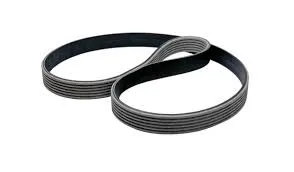- Arabic
- French
- Russian
- Spanish
- Portuguese
- Turkish
- Armenian
- English
- Albanian
- Amharic
- Azerbaijani
- Basque
- Belarusian
- Bengali
- Bosnian
- Bulgarian
- Catalan
- Cebuano
- Corsican
- Croatian
- Czech
- Danish
- Dutch
- Afrikaans
- Esperanto
- Estonian
- Finnish
- Frisian
- Galician
- Georgian
- German
- Greek
- Gujarati
- Haitian Creole
- hausa
- hawaiian
- Hebrew
- Hindi
- Miao
- Hungarian
- Icelandic
- igbo
- Indonesian
- irish
- Italian
- Japanese
- Javanese
- Kannada
- kazakh
- Khmer
- Rwandese
- Korean
- Kurdish
- Kyrgyz
- Lao
- Latin
- Latvian
- Lithuanian
- Luxembourgish
- Macedonian
- Malgashi
- Malay
- Malayalam
- Maltese
- Maori
- Marathi
- Mongolian
- Myanmar
- Nepali
- Norwegian
- Norwegian
- Occitan
- Pashto
- Persian
- Polish
- Punjabi
- Romanian
- Samoan
- Scottish Gaelic
- Serbian
- Sesotho
- Shona
- Sindhi
- Sinhala
- Slovak
- Slovenian
- Somali
- Sundanese
- Swahili
- Swedish
- Tagalog
- Tajik
- Tamil
- Tatar
- Telugu
- Thai
- Turkmen
- Ukrainian
- Urdu
- Uighur
- Uzbek
- Vietnamese
- Welsh
- Bantu
- Yiddish
- Yoruba
- Zulu
Tach . 10, 2024 20:38 Back to list
Understanding Different Types of Poly V Belts and Their Applications
Understanding Poly V Belt Types A Comprehensive Guide
Poly V belts, also known as serpentine belts or multi-rib belts, have become a staple in various automotive and industrial applications due to their efficiency and versatility. These belts are designed with multiple grooves or ribs along their length, allowing them to effectively transmit power while minimizing slippage. In this article, we will delve into the different types of Poly V belts, their construction, advantages, and applications.
Construction of Poly V Belts
Poly V belts are typically made from a combination of rubber and textile materials, which provide durability and flexibility. The ribbed design increases the surface area in contact with pulleys, enabling better grip and power transmission compared to traditional V belts. The ribs are usually molded onto a flat base, which helps maintain stability during operation. The manufacturing process often includes the incorporation of reinforcements, like polyester or aramid fibers, enhancing the belt's strength and load-carrying capacity.
Types of Poly V Belts
1. Standard Poly V Belts These are the most common type of Poly V belts utilized in various vehicles and machinery. They feature a simple ribbed design and come in a variety of sizes to fit different pulleys. Standard Poly V belts are suitable for most applications, offering reliable performance for automotive engines and household appliances.
2. Narrow Poly V Belts Narrow Poly V belts have a reduced width while maintaining a high number of ribs. This design minimizes friction and heat buildup, making them ideal for compact spaces. They are frequently used in applications where space is limited, such as in certain automotive engines and electronic equipment.
3. High-Performance Poly V Belts As the name suggests, high-performance Poly V belts are designed to operate under extreme conditions. They are constructed with advanced materials and reinforced with additional fibers, making them suitable for high-speed applications or machinery experiencing heavy loading. These belts are typically employed in racing vehicles, industrial equipment, and other high-stress environments.
4. Weather-Resistant Poly V Belts These belts are specifically engineered to withstand harsh environmental conditions, such as extreme temperatures and exposure to chemicals. Weather-resistant Poly V belts are often used in outdoor applications, agricultural equipment, and machinery operating in harsh climates. Their resistance to abrasion and degradation helps ensure longevity and reliability.
5. Variable Speed Poly V Belts These belts are designed to operate with pulleys that can change speed ratios. Variable speed Poly V belts are commonly found in HVAC systems, where varying fan speeds are necessary for optimal performance. Their capability to handle dynamic speed changes makes them versatile in various applications, including production machinery and conveyor systems.
Advantages of Poly V Belts
poly v belt types

Poly V belts offer numerous benefits that contribute to their widespread use
- Higher Power Transmission Efficiency The multi-rib design increases the surface area contact, reducing slippage and improving power transfer efficiency compared to traditional belts.
- Compact Design Poly V belts can transmit a significant amount of power in a smaller space, making them ideal for modern machinery and vehicles where space is a premium.
- Reduced Noise Levels The smooth operation of Poly V belts tends to be quieter than that of standard V belts, providing a more pleasant user experience in residential and workplace settings.
- Low Maintenance These belts generally require less frequent replacement compared to traditional belts, which contributes to lower maintenance costs over time.
Applications of Poly V Belts
Poly V belts are utilized across various industries, including automotive, manufacturing, and home appliances. They are primarily found in
- Automotive engines for alternators, power steering pumps, and air conditioning compressors. - Industrial machinery and equipment, such as conveyor systems and HVAC units. - Household appliances like refrigerators and washing machines.
Conclusion
Understanding the different types of Poly V belts and their applications is vital for anyone involved in maintenance, engineering, or manufacturing. With their superior efficiency, compact design, and range of options available, Poly V belts play an essential role in modern mechanics. Whether you are selecting a belt for a vehicle or industrial equipment, acknowledging the specific type that best meets your needs ensures optimal performance and longevity.
-
Korean Auto Parts Timing Belt 24312-37500 For Hyundai/Kia
NewsMar.07,2025
-
7PK2300 90916-T2024 RIBBED BELT POLY V BELT PK BELT
NewsMar.07,2025
-
Chinese Auto Belt Factory 310-2M-22 For BMW/Mercedes-Benz
NewsMar.07,2025
-
Chinese Auto Belt Factory 310-2M-22 For BMW/Mercedes-Benz
NewsMar.07,2025
-
90916-02660 PK Belt 6PK1680 For Toyota
NewsMar.07,2025
-
drive belt serpentine belt
NewsMar.07,2025

